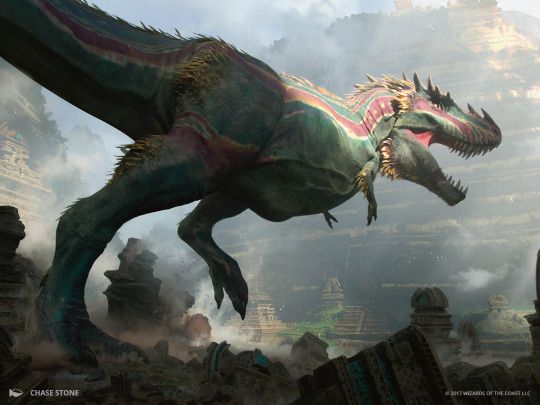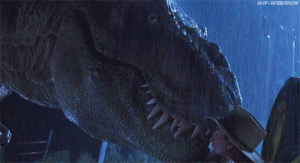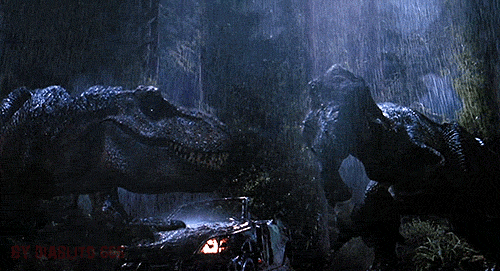(Ghalta, Primal HungerGhalta, Primal Hunger | Art by Chase Stone)
You're Gonna Hear Me Roar
Hello, and welcome back to a special edition of Ultra Budget Brews, the article series that builds entire EDH decks containing no card that costs more than $1 (commander excluded). Since it's been a while, I figured that I should remind you all of the series within a series we're currently in. If you remember my Talrand, Torbran, or Rankle articles, you can skip down a bit as you will already know the goals of this article.
One thing that I’ve noticed on social media is that I’m not the only person who’s found themselves with some extra free time. Being stuck at home for long periods of time can definitely lead to bouts of boredom, and one way to battle this is to teach Magic to the people you’re stuck with. Between running an after-school club for the last 3 years and teaching a bunch of my family and random friends, I have taught dozens of people to play Magic, and I have almost exclusively used EDH to do so.
If you’re reading this, you’re either very experienced with EDH or very excited to learn; people don’t often read articles about EDH if they aren’t one of the two. If you’re the former, it can be difficult to realize how much you know and take for granted. Magic is a huge game with a lot to keep track of, and EDH only amplifies this by giving you twice as much to track. In short, it can be difficult to teach.
My goal is to build a few decks that would be useful to those who might be interested in getting someone into EDH or in having a deck that’s at an appropriate level of power and complexity to play against someone who’s just getting into the format and is new-ish to Magic. The goal of these will be to have something that is fairly intuitive for someone to pick up and play, or, if playing against it, to be able to look across the table and easily understand what is happening. EDH actually goes a long way to help us with this by providing a commander, which often serves as a great signpost, giving a lot of information about the goal of the deck.
We want our deck to do something that’s easy to explain and understand. If you can’t explain the goal of the deck in a sentence or two, it’s likely a bit too complex. I don’t mean, “The deck’s goal is to win the game, hue hue hue.” Obviously we’re trying to do that. For example, one of my go-to decks to teach people to play is a Gisa and GeralfGisa and Geralf Zombie tribal deck. When I tell people what the deck is trying to do, I tell them they are filling up the graveyard with Zombies, eventually attempting to overwhelm their opponents with a horde of them. This gives them a goal of getting a bunch of Zombies in to play. If they’re able to accomplish this, they’ll likely feel that they’ve been successful even if they eventually lose.
With all of this being said, we still want the deck to be able to compete. Just because we’re building a cheap, simple deck doesn’t mean that we don’t want it to be able to win. Giving someone a deck that is so underpowered that it doesn’t stand a chance will not encourage someone to want to play again.
In conclusion we want our deck to be:
- Intuitive
- Led by a commander with a clear gameplan
- Able to compete
Timmy Time!
As we've already done red, blue, and black, I decided to hit green next. I've built a handful of mono-green decks over the years, with the highlights being Sasaya, Orochi AscendantSasaya, Orochi Ascendant and Grothama, All-DevouringGrothama, All-Devouring, and I've typically had a good time playing with and against mono-green decks. They tend to provide pretty straightforward gameplay while still being powerful, which is perfect for what we are trying to do here. Eventually, I narrowed it down to either Goreclaw, Terror of Qal SismaGoreclaw, Terror of Qal Sisma or Ghalta, Primal HungerGhalta, Primal Hunger, as I felt they both could be built well on a budget, and both really lean in to the 'Timmy Smash!' feel that pervades green as a color. Eventually I decided to go with Ghalta because I've played against a number of Ghalta decks over the years and the pilot always seems like they'are having the most fun at the table, win or lose.
I should note here that if you are looking to make a mono-green deck for a beginner that isn't on a budget, Elves are a fantastic option. Whether you're going with Ezuri, Renegade LeaderEzuri, Renegade Leader, Marwyn, the NurturerMarwyn, the Nurturer, or (my personal favorite) Freyalise, Llanowar's FuryFreyalise, Llanowar's Fury, you're likely to end up with a powerful deck that can absolutely explode out of nowhere that is fairly easy to understand. Unfortunately, Elves are very, very popular and often, quite expensive.
Our Commander
Pros
- Is a Dinosaur
- Is a 12/12
- Makes with the trampling
- Is, by definition, always hungry
Cons
- It costs a lot of mana, sometimes
- It wasn't printed in 2020, because if it were printed in 2020, it would have haste and draw cards somehow
- It dies to removal (yes, this is not a real con; finding cons for this bad lady is really hard)
- It's not a velociraptor, the best antagonists in the Jurassic Park series
This card doesn't mess around. It knows exactly what it is (a really big, dumb beatstick), exactly what it's supposed to do (make players super dead, super fast), and who it's supposed to appeal to (everyone). It's splashy and reminds me of why I got started playing Magic in the first place.
Our Deck
A Deck 65 Million Years in the Making
View on ArchidektCommander (1)
- 1 Ghalta, Primal HungerGhalta, Primal Hunger
Creatures (45)
- 1 Acidic SlimeAcidic Slime
- 1 Aggressive MammothAggressive Mammoth
- 1 Arbor ColossusArbor Colossus
- 1 Arbor ElfArbor Elf
- 1 Bellowing TanglewurmBellowing Tanglewurm
- 1 Caustic CaterpillarCaustic Caterpillar
- 1 CloudthresherCloudthresher
- 1 Crash of Rhino BeetlesCrash of Rhino Beetles
- 1 Deathgorge ScavengerDeathgorge Scavenger
- 1 DrumhunterDrumhunter
- 1 Elvish MysticElvish Mystic
- 1 End-Raze ForerunnersEnd-Raze Forerunners
- 1 Fierce EmpathFierce Empath
- 1 Gaea's RevengeGaea's Revenge
- 1 Garruk's PackleaderGarruk's Packleader
- 1 Genesis HydraGenesis Hydra
- 1 Giant AdephageGiant Adephage
- 1 Hunted TrollHunted Troll
- 1 Kalonian TwingroveKalonian Twingrove
- 1 Karametra's AcolyteKarametra's Acolyte
- 1 Kogla, the Titan ApeKogla, the Titan Ape
- 1 Krosan DroverKrosan Drover
- 1 Llanowar ElvesLlanowar Elves
- 1 Llanowar TribeLlanowar Tribe
- 1 Nessian BoarNessian Boar
- 1 PhytotitanPhytotitan
- 1 Rampaging BalothsRampaging Baloths
- 1 Ravenous SlimeRavenous Slime
- 1 Realm SeekersRealm Seekers
- 1 Reclamation SageReclamation Sage
- 1 Renata, Called to the HuntRenata, Called to the Hunt
- 1 Ripjaw RaptorRipjaw Raptor
- 1 Sakura-Tribe ElderSakura-Tribe Elder
- 1 Scute MobScute Mob
- 1 Surrak, the Hunt CallerSurrak, the Hunt Caller
- 1 TerastodonTerastodon
- 1 Territorial AllosaurusTerritorial Allosaurus
- 1 Thrashing BrontodonThrashing Brontodon
- 1 Traxos, Scourge of KroogTraxos, Scourge of Kroog
- 1 Verdurous GearhulkVerdurous Gearhulk
- 1 Voyaging SatyrVoyaging Satyr
- 1 Whisperer of the WildsWhisperer of the Wilds
- 1 Wolfir SilverheartWolfir Silverheart
- 1 Wood ElvesWood Elves
- 1 Yorvo, Lord of GarenbrigYorvo, Lord of Garenbrig
Sorceries (4)
- 1 CultivateCultivate
- 1 HarmonizeHarmonize
- 1 Nissa's PilgrimageNissa's Pilgrimage
- 1 Rampant GrowthRampant Growth
Instants (6)
- 1 HarrowHarrow
- 1 Hunter's InsightHunter's Insight
- 1 Momentous FallMomentous Fall
- 1 Nature's ClaimNature's Claim
- 1 Ram ThroughRam Through
- 1 Wrap in VigorWrap in Vigor
Artifacts (3)
- 1 FireshriekerFireshrieker
- 1 Lifecrafter's BestiaryLifecrafter's Bestiary
- 1 Rhonas's MonumentRhonas's Monument
Enchantments (4)
- 1 Colossal MajestyColossal Majesty
- 1 Elemental BondElemental Bond
- 1 Garruk's UprisingGarruk's Uprising
- 1 Kenrith's TransformationKenrith's Transformation
Lands (37)
- 1 Blighted WoodlandBlighted Woodland
- 34 ForestForest
- 1 Mosswort BridgeMosswort Bridge
- 1 Tranquil ThicketTranquil Thicket
Total cost: $37.65
Our deck's plan is pretty simple: stick a few big creatures to reduce the cost of Ghalta, cast Ghalta, turn creatures sideways until nothing on the table is moving. Actually, if nothing is moving, keep attacking since your opponents will attempt to "keep absolutely still." They know your "vision is based on movement. They can't see us if we don't move."
Because of how Ghalta is worded, we want as many over-statted creatures as we can jam into our deck. Cards like Scute MobScute Mob, Traxos, Scourge of KroogTraxos, Scourge of Kroog, and Wolfir SilverheartWolfir Silverheart go a long ways towards making Ghalta very cheap, very quickly. The speed at which you can get her in to play is what really sets Ghalta apart, in my mind. My personal theory of EDH is that there are, broadly speaking, two ways to make a deck powerful: consistency and speed.
Consistency has a lot to do with tutors and redundancy and is something that is typically (monetarily) expensive, making it something I don't often talk about in these articles. Speed has to do with how quickly you enact your gameplan. Ghalta doesn't do much for us in the consistency department, but comes up absolute aces in the speed department. With a simply above average start, you will often have access to Ghalta on turn 4 and almost always on turn 5.
Along with a handful of the legendary Eldrazi (which require you to be in colorless), Ghalta is one of the only card-carrying members of the "two-hit club"; If Ghalta hits you twice, unimpeded, you're dead from commander damage. Trample keeps your opponents honest by requiring decent-sized creatures to mitigate damage in a meaningful way, as opposed to that stray dice that's supposed to represent a 0/1 Plant from the beginning of the game when your opponent played a Khalni GardenKhalni Garden as their first land that you all forgot existed until it soaked up 10 damage from your Kalamax, the StormsireKalamax, the Stormsire which is a HUGE DINOSAUR THAT CREATES STORMS WHY IN THE WORLD DOESN'T IT HAVE TRAMPLE, WIZARDS YOU COWA---

Sorry about that. Where was I?
Ah, yes, Ghalta, the card that cares very little about 0/1 blockers. While eliminating opponents with commander damage isn't necessarily what we're aiming for, it's certainly going to happen fairly often. This fact serves as both the greatest strength of the deck as well as its greatest weakness. It's hard to overstate how powerful it is to have such a solid, reliable path to victory stapled on to the one card you literally always have access to. It is equally hard to overstate how much damage is done to your opponents' psyche by Ghalta and the lengths they will go to to prevent those shenanigans from happening. Every Swords to PlowsharesSwords to Plowshares, PongifyPongify, and Hero's DownfallHero's Downfall will be headed in her direction, and every one of them will be entirely justified.
The rest of the deck is packed full of the best creatures that $1 or less can buy. Of our 100 cards, a full 47 of them are creatures. Because we're running so many creatures, we're leaning heavily on creatures with enters-the-battlefield effects, static effects, and activated abilities to give us access to the effects that every EDH deck needs. For removal, we're running cards like Acidic SlimeAcidic Slime, Caustic CaterpillarCaustic Caterpillar, and CloudthresherCloudthresher. For ramp, we have Wood ElvesWood Elves, Sakura Tribe ElderSakura Tribe Elder, and Realm SeekersRealm Seekers. For graveyard hate, we have Deathgorge ScavengerDeathgorge Scavenger and Ravenous SlimeRavenous Slime. For card draw, we added Nessian BoarNessian Boar, DrumhunterDrumhunter, and Ripjaw RaptorRipjaw Raptor.
We're clearly still running a few noncreature spells (we aren't a Nikya of the Old WaysNikya of the Old Ways or a Primal SurgePrimal Surge deck), but we are able to cobble together enough creatures that do a good enough imitation of noncreature spells, all while making Ghalta cheaper.
We aren't trying to be sneaky or clever about how we win. Our turns will likely be the shortest at the table, if you discount the continuous math your opponents will be doing in the combat step. This will give you ample time to entertain yourself on your phone while you are, ostensibly, already being entertained by a game of EDH. Or, you know, actually chat with your friends and actively participate in the game even when it isn't your turn.
Notable Inclusions
Krosan DroverKrosan Drover
Krosan Drover
This is an old card that sees very little play, but seems like a solid inclusion, applying to 11 of our creatures. The difference between 6-8 mana and 4-6 mana is huge, as it allows you to cast multiple big baddies a turn. End-Raze ForerunnersEnd-Raze Forerunners for 6 mana, Giant AdephageGiant Adephage for 5 mana, and TerastodonTerastodon at 6 mana are all fantastic deals.
Wrap in VigorWrap in Vigor
Wrap in Vigor
Sometimes, your board of huge, scary monsters is going to be a bit overwhelming for your opponents, and they're going to want to do something about it. They'll drop a Blasphemous ActBlasphemous Act, a Day of JudgmentDay of Judgment, a Supreme VerdictSupreme Verdict. You, being a person of culture, will have kept up 2 green mana and will watch your opponent destroy all of the blockers on the table, practically assuring your victory. Will this happen every time? Certainly not. Merciless EvictionMerciless Eviction, Wrath of GodWrath of God, and Toxic DelugeToxic Deluge don't give one whit about regeneration and are all pretty popular cards. That being said, this will pull its weight often enough to be worth the slot.
DrumhunterDrumhunter
Drumhunter
Passive card draw for doing what your deck is designed to do is great. The ramp doesn't hurt, either, though a mana dork at 4 isn't something your average deck would be interested in; however, the fact that you get to staple together the ramp and the card draw onto a single card is what allows this to get the nod.
Bellowing TanglewurmBellowing Tanglewurm
Bellowing Tanglewurm
Do you remember exactly what intimidate does? Good, neither did I. It means that the only things that are able to block your creatures are artifact critters or other green creatures. Everything else is getting blocked by the face.
You don't even have to attack with your Wurm. It's more than happy to just chill, block a few critters, and let your huge monsters be sneaky. Don't sleep on this card.
Hunted TrollHunted Troll
Hunted Troll
This is secretly one of the better cards in the deck. If you cast this on turn 4 (or even 3 with a mana dork or a ramp spell), big mama Ghalta is coming down next turn. An 8/4 with regenerate and a 12/12 with trample is quite the clock, no matter who you are.
Notable Exclusions
As always, these are the cards that I'd add to the deck if I were wanting to up the power level, unconcerned about a strict budget, or simply had easy access to a copy.
Yeva, Nature's HeraldYeva, Nature's Herald
Yeva, Nature's Herald
The only thing better than huge creatures are huge creatures with flash.
GigantosaurusGigantosaurus
Gigantosaurus
Managorger HydraManagorger Hydra
Managorger Hydra
This card has a habit of taking over games and sort of warping the table around it. I don't mean this in a negative way, simply that it is THE threat on the table until someone deals with it. If people ignore it, and, anecdotally, it gets ignored far too often, the table is in for a bad time. Forgotten AncientForgotten Ancient is another one that deserves a shoutout because it does essentially the same thing.
Greater GoodGreater Good
Greater Good
Your creatures are going to get removed. There isn't really a way around this reality. Since this is a reality, we should be prepared for it. Having a free sacrifice outlet that grants you absurd amounts of card draw is exactly what the doctor ordered. There's a reason that this is in over 13,000 decks on EDHREC.
Return of the WildspeakerReturn of the Wildspeaker
Return of the Wildspeaker
There are a total of four Humans in the entire deck, so both modes on this are going to be great. You are likely using this for the card draw a solid 90% of the time, but the other mode can end games in a hurry if you manage to go wide enough. This is also particularly nice because, unlike another green budget staple, Soul's MajestySoul's Majesty, this doesn't target a creature, allowing you to still get value out of it even if your largest creature gets nuked in response.
End Step
What did you think of our deck? Is this the kind of deck you'd be comfortable teaching someone with and lending to someone who wants to learn EDH for the first time? I'd love to hear your feedback below. Soon I'll be wrapping up this series arc with mono-white. Until next time!
Andrew Cummings
Andrew is a life-long gamer and has been playing Magic since 2013. He works as an ASL interpreter, enjoys running, and sitting on his porch reading, while simultaneously silently judging his neighbors. He lives in Joplin, MO with his wife.
Your opinions are welcome. We love hearing what you think about Magic! We ask that you are always respectful when commenting. Please keep in mind how your comments could be interpreted by others. Personal attacks on our writers or other commenters will not be tolerated. Your comments may be removed if your language could be interpreted as aggressive or disrespectful. You may also be banned from writing further comments.




